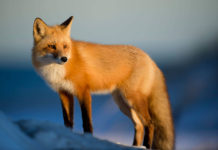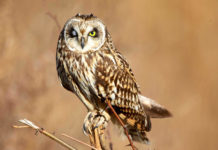Europe. Probably the most diverse continent in the world. One continent with so many countries at short distance and so different between each other.
The biggest draw of Europe is its huge wealth of historical attractions: The Renaissance art of Florence, the birthplace of Democracy in Athens, the multicultural canvas of London, the grandeur of Paris, the fascinating canals of Venice, the gothic architecture of Prague.
The natural scenery is also captivating. From the imposing Alps to the Mediterranean beaches, from the numerous picturesque small villages across the continent to the unique view of the Norwegian Fjords, and the waterfalls of Iceland. You can find everything you’re looking for.
When it comes to food and drink, it’s also one of the most interesting places as a lot of the most popular cuisines have originated here. You can try a pizza in Naples, a schnitzel in Vienna, a souvlaki in Santorini, a goulash soup in Budapest, a steak tartar in Paris, a paella in Barcelona and many more. The nightlife is really impressive as well as Europeans really know how to party; have a beer at a British or Irish pub, have a cocktail at one of the speakeasy bars or enjoy a party at a Eastern-European night club.
Get ready to explore the most diverse continent and indulge the experience.
Europe Highlights
Cities
London
Paris
Rome
Prague
Barcelona
Lisbon
Athens
Experiences
Gondola Ride at Venice
Sailing around the Greek Islands
Catch the Northern Lights
See the Windmills and Tulips of Holland
Roadtrip around Iceland
Ski at the Alps
Wine tasting in France and Italy
Nature
Hallstatt Lake | Austria
Belluno Dolomites National Park | Italy
Alsace | France
Cinque Terre | Italy
Meteora | Greece
Plitvice Lakes National Park | Croatia
Fjords | Norway
Monuments
Acropolis | Athens
Big Ben | London
Eiffel Tower | Paris
Colosseum | Rome
St. Basil’s Cathedral | Moscow
Sagrada Familia | Barcelona
Atomium | Brussels
Eiffel Tower
Holland's Windmills
Santorini
Venice Canals
The Alps
Europe Map
Experience Europe
Our Suggested Tours
Quick Facts
Population: 748 million
Countries: 46 countries (of which 27 are members of the European Union or EU)
Languages: There are several languages spoken in Europe. The most spoken ones are Russian, German, French and English.
Time Zone: Most of Europe uses three standard time zones. From west to east the time zones are Western European Time (WET) which is UTC/GMT +0, Central European Time (CET) which is UTC/GMT+1 and Eastern European Time(EET) which is UTC/GMT +2.
Currency: The most common currency is the Euro (€) and it used in 19 countries. There are more currencies used in other countries such as: the British Pound (£), the Swiss Franc, the Krone, the Ruble, the Lev, the Forint and others.
Plugs: The UK, Ireland and Cyprus use type G plugs. All other countries use type C and mainly type F plugs. France, Belgium, Poland, Slovakia & Czechia use type E plugs instead of type F. The standard voltage is 230 V and the frequency is 50Hz.
✩ Europe Is the world’s second smallest continent
✩ Europe is named after the Phoenician princess Europa who was seduced by the Greek God Zeus, disguised as a bull according to Greek mythology.
✩ Europe makes 44% of the world’s wine.
✩ Europe contains both the smallest and largest countries in the world by area. The smallest is Vatican City and the largest is Russia.
✩ Europeans eat 50% of all the world’s chocolate.
✩ There are more UNESCO World Heritage Sites in Europe than any other continent in the world.
✩ The first humans arrived in Europe in 38,000 BC. However, the Minoan civilisation in the Bronze Age are seen as the establishers of the first culture from 2700 BC.
✩ Rainforests exist within Europe, but they are very rare. Perucica in Bosnia is one of the last rainforests in Europe.
✩ Over 200 languages are spoken throughout Europe. Most of those derive from either the Germanic languages (e.g. German and English), Latin languages (e.g. French, Italian and Spanish) and the Slavic languages (e.g. Russian, Polish and Bulgarian).
✩ The world’s second most active volcano is in Europe. It’s Mount Etna in Italy.
Newsletter
Best Time to Visit
The busiest time of year is summer from June to August, travellers from all over the world flock to the region to soak up the good weather.
If you’re planning a trip during these months, book as much of it as you can in advance. Flights, even with budget airlines, can triple in price!
If you’re backpacking, the best time to travel to the region is during the offseason. From October to November and mid-January to March, you’ll have better luck finding cheap flights and hotels reduce their prices.
However, winter is also a busy time of year for people planning a ski vacation or wanting to experience the numerous Christmas Markets.









